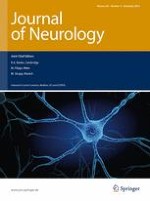01-11-2014 | Original Communication
NADPH oxidase (NOX2) activity is a modifier of survival in ALS
Published in: Journal of Neurology | Issue 11/2014
Login to get accessAbstract
NADPH-oxidases (NOX) catalyze the
formation of reactive oxygen species (ROS), which play a role in the development of neurological diseases, particularly those generated by the phagocytic isoform NOX2. Increased ROS has been observed in the amyotrophic lateral sclerosis (ALS) SOD1 transgenic mouse, and in this preclinical model the inactivation of NOX2 decreases ROS production and extends survival. Our aim was to evaluate NOX2 activity measuring neutrophil oxidative burst in a cohort of 83 ALS patients, and age- and gender-matched healthy controls. Oxidative burst was measured directly in fresh blood using Phagoburst™ assay by flow cytometry. Mean fluorescence intensity (MFI), emitted in response to different stimuli, leads to produce ROS and corresponds to the percentage of oxidizing cells and their enzymatic activity (GeoMean). No difference was found between the MFI values in cases and controls. NOX2 activity was independent from gender and age, and in patients was not related to disease duration, site of onset (bulbar vs. spinal), or ALSFRS-R score. However, patients with a NOX2 activity lower than the median value showed a 1-year increase of survival from onset (p = 0.011). The effect of NOX2 was independent from other known prognostic factors. These findings are in keeping with the observations in the mouse model of ALS, and demonstrate the strong role of NOX2 in modifying progression in ALS patients. A proper modulation of NOX2 activity might hold therapeutic potential for ALS.





